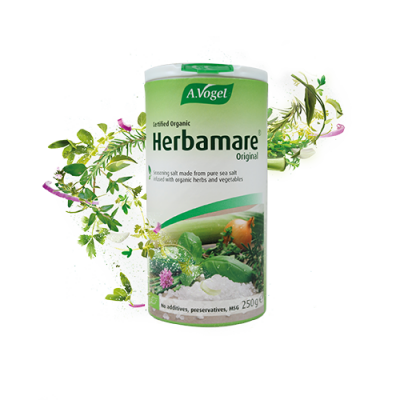The link between IBS and stress
As I’ve discussed in previous blogs, there is a close connection between stress and IBS. On one hand, IBS can cause stress or anxiety if you constantly find yourself worrying about controlling or hiding your symptoms while at work or in public. On the other hand, day-to-day stress can irritate the gut and contribute to IBS symptoms such as diarrhoea.
It can be difficult to determine whether stress is causing your symptoms, or vice versa; however, reducing your stress levels can help to give a clearer picture of which symptoms are exacerbated when you’re worried or anxious.
Exercise for IBS
When done right, exercise can be beneficial for symptoms of IBS. Gentle, low-impact movements can reduce stress which can, in turn, ease symptoms of IBS. However, high intensity exercise is not the way to go if you’re looking to reduce your IBS symptoms, as it can actually be a source of stress to the body.
So, sticking with simple stretches can help to decrease your levels of stress, as well as giving your digestive system a gentle workout to get things moving the way they should.
Emotional symptoms of IBS
Psychological symptoms of IBS include stress, anxiety and low mood. As the brain and gut are thought to be closely connected, we believe that these emotional symptoms can cause or worsen IBS.
For example, if you experience a sudden change in your bowel movements, this can trigger anxiety or even, in some cases, a panic attack. This emotional stress is then more likely to upset your bowels, and the cycle continues.
Simple stretches to help
Gentle stretching and exercise is a great way to relieve your worries by focusing on breathing and relaxing the body. In turn, by easing your mind, you can help to reduce troubling IBS symptoms.
What is more, breathing deeply and using the full capacity of your lungs will help to open up the front of your torso and allow more room for digestion. Plus, relaxing and contracting the abdominal muscles can also massage the internal organs to help encourage digestion.
Try incorporating some gentle stretches into your daily routine (just 10 minutes of stretching before bedtime can be a great way to wind down!).
1. Stress-relieving stretch
A perfect place to start is this easy, relaxing stretch which encourages deep breathing and total relaxation of the body. It might take a bit of practice to perfect this stretch before you can get this comfortable without nodding off to sleep! Make sure you have some free time in a quiet place where you know you won’t be disturbed.
For this stretch, you can either lie completely flat, or support your head and upper back to open up your chest and release your shoulders, which will allow you to breathe deeply and evenly. Now, focus your attention on your breathing, expanding and contracting your chest with each breath and making sure to fill your lungs to their full capacity.
As you breathe slowly and evenly, relax your muscles, working your way from the tips of your toes, all the way up to your forehead. Focusing closely on your breathing and relaxing these individual muscles will help to relieve anxiety and tension in your body. Practicing this relaxing stretch daily is a useful way of coping with stress and allowing your body to take a moment to slow down and relax.

Physical symptoms of IBS
Many people with IBS suffer from bloating, excess gas and constipation. Needless to say, these physical symptoms can be uncomfortable and difficult to deal with.
These gentle stretches can be used to stimulate your abdominal muscles which, in turn, can massage your internal organs and digestive system and get things moving properly. Incorporating these into your daily routine can also help to ease physical symptoms of IBS at the same time as calming the mind.
Simple stretches to help
2. Stretch for bloating and pain
This stretch will apply gentle pressure to your lower abdomen and help to relieve bloating and abdominal pain.
For this stretch, kneel on the floor and rest your bottom on the heels of your feet. Bend forwards and stretch your arms out in front of you, resting them on the floor as far away from your body as you can while being comfortable.
Keep breathing evenly and hold the stretch for around 10 seconds, before drawing yourself back up into a kneeling position. You can repeat this as many times as you want to help to relieve bloating.

3. Stretch for constipation
This stretch focuses on contracting and relaxing the abdominal muscles to massage the internal organs and improve your digestion. This will help to get things moving.
To begin, get down on all fours with your spine straight. First, take a deep breath as you drop your stomach towards the floor, lifting your chin and chest. If you also want to stretch out your neck and shoulders, you can look up to the ceiling as you do this.
Next, breathe out slowly as you round your back towards the ceiling and bring your stomach in towards your spine.
Slowly repeat these stretches around 5-10 times and feel your abdominal muscles gently relaxing and contracting as you alternate between stretches.

4. Stretch for wind
This stretch applies gentle pressure to the abdominal organs to help with the release of unwanted gases from the digestive system. By relieving this excess wind, you can also tackle bloating.
Begin by lying flat on your back and taking a few deep breaths. Keeping your neck and head relaxed and resting on the floor, inhale and slowly bring your right knee to your chest.
Wrap your arms around your knee, keep your left leg on the floor and hold the stretch while you take several deep breaths. As you exhale, gently release your leg and lower it back down onto the floor.
Repeat with your left leg, taking slow, deep breaths as you stretch. If you feel like you can, try to raise both knees at the same time and hold for several breaths. Keep doing this as many times as you like.

What you said!
We recently ran a poll to find out if stretching eases IBS symptoms. We've crunched the numbers and here are the results.
Results: Do you find stretching eases IBS symptoms?
It's great to see that 75% of you find stretching eases IBS symptoms. Gentle, low-impact exercise can be beneficial for symptoms of IBS, and can also be a good way to reduce stress.











